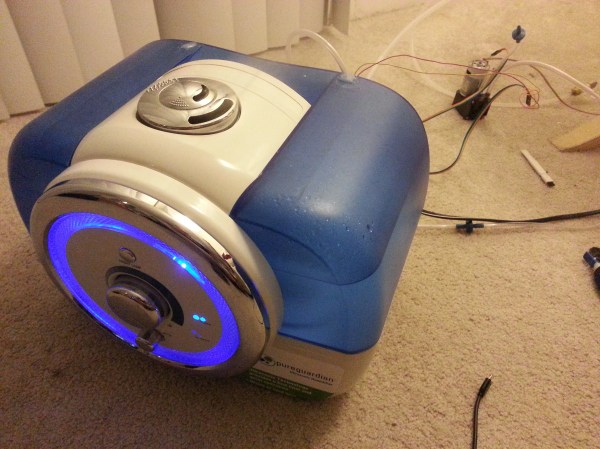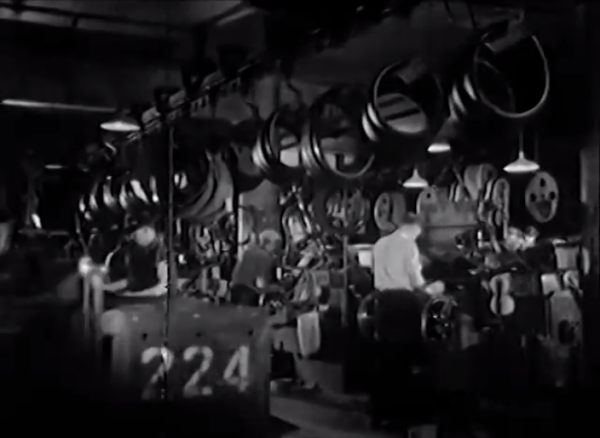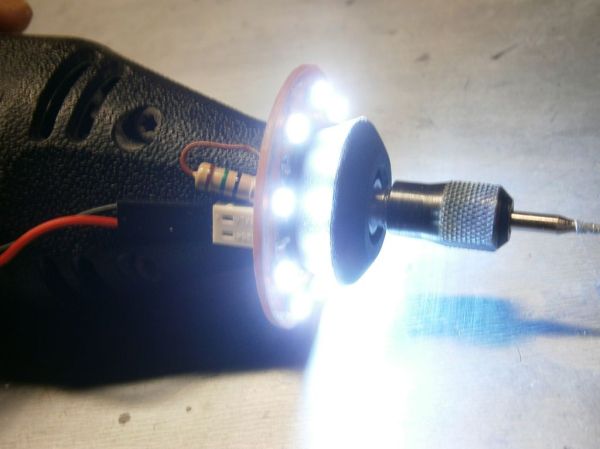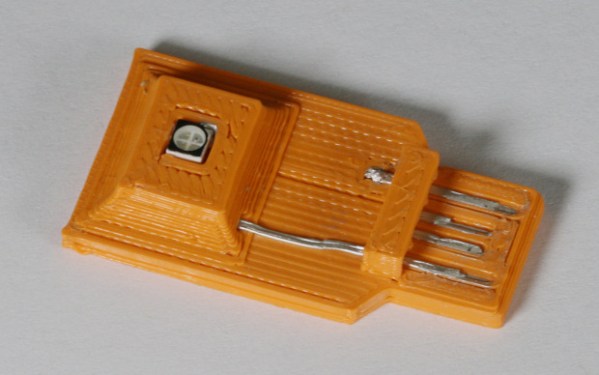There are hackers who have soldering setups on the dining room table, and then there are hackers who have scanning electron microscopes in their living room. [Macona] is part of the latter group, with a Hitachi S-450 SEM he’s repaired and modified himself. [Macona] has documented the whole thing on Hackaday.io. The Hitachi came to him and a friend as a derelict. First it was broken, then stored for 10 years. It turned out the problem was a high voltage cable cut and spliced with electrical tape. The tape eventually broke down and shorted out the 500V supply. Thankfully the rectifier diodes were the only parts that needed to be replaced.
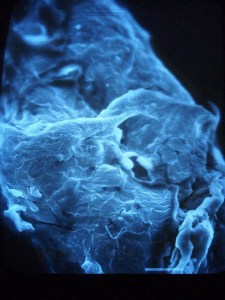 The SEM sprang to life and gave [Macona] and a friend their first images. However, SEMs are finicky beasts. Eventually the filament burned out and needed to be replaced. New filaments are $500 US for a box of 10, which is more than [Macona] wanted to spend. It turns out filaments can be built at home. A bit of .089mm tungsten wire and a spot welder were all it took to fix the issue. Next to go bad was the scan amplifier. While SEMs use many exotic parts, the Hitachi used relatively common Sanyo STK070 audio amplifiers for the purpose – an easy fix!
The SEM sprang to life and gave [Macona] and a friend their first images. However, SEMs are finicky beasts. Eventually the filament burned out and needed to be replaced. New filaments are $500 US for a box of 10, which is more than [Macona] wanted to spend. It turns out filaments can be built at home. A bit of .089mm tungsten wire and a spot welder were all it took to fix the issue. Next to go bad was the scan amplifier. While SEMs use many exotic parts, the Hitachi used relatively common Sanyo STK070 audio amplifiers for the purpose – an easy fix!
One thing that makes this SEM unique is the is Energy Dispersive X-Ray Spectroscopy (EDX) unit attached to it. The fragile liquid nitrogen cooled sensor was working, but the 1980’s era signal processing computer was a bit too old to bring up. A friend and fellow SEM hobbiest gave [Macona] a slightly newer Kevex Sigma Gold signal processor, which was nearly a plug and play upgrade for his machine. The new processor processor also gave him digital beam controls and a digital output which could be used to capture images with a PC.
Once all the connections were made, the EDX worked surprisingly well, even finding gold in a uranium ore sample placed in the microscope.
Now that old scanning electron microscopes being retired, it’s only a matter of time before more us get a chance to join the ranks of [Jeri Ellsworth], [Ben Krasnow] and [Macona] with our own personal SEMs!


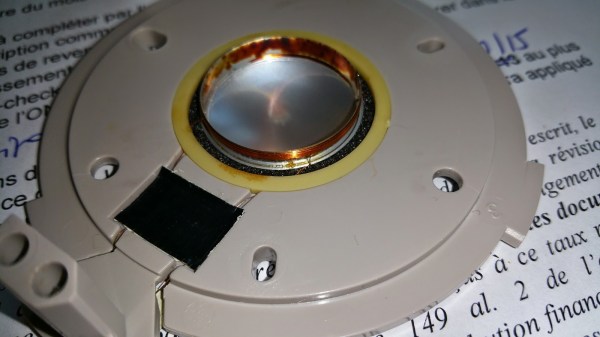
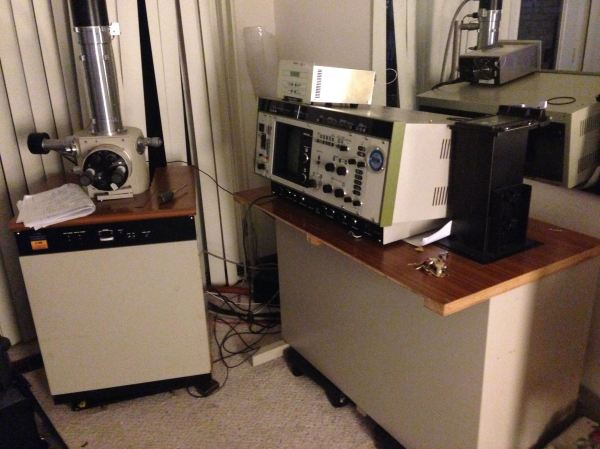
 The SEM sprang to life and gave [Macona] and a friend their first images. However, SEMs are finicky beasts. Eventually the filament burned out and needed to be replaced. New filaments are $500 US for a box of 10, which is more than [Macona] wanted to spend. It turns out filaments can be built at home. A bit of .089mm tungsten wire and a spot welder were all it took to fix the issue. Next to go bad was the scan amplifier. While SEMs use many exotic parts, the Hitachi used relatively common Sanyo STK070 audio amplifiers for the purpose – an easy fix!
The SEM sprang to life and gave [Macona] and a friend their first images. However, SEMs are finicky beasts. Eventually the filament burned out and needed to be replaced. New filaments are $500 US for a box of 10, which is more than [Macona] wanted to spend. It turns out filaments can be built at home. A bit of .089mm tungsten wire and a spot welder were all it took to fix the issue. Next to go bad was the scan amplifier. While SEMs use many exotic parts, the Hitachi used relatively common Sanyo STK070 audio amplifiers for the purpose – an easy fix!